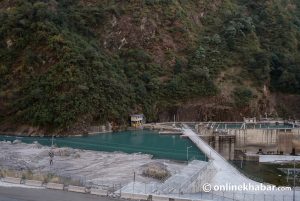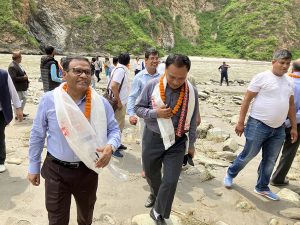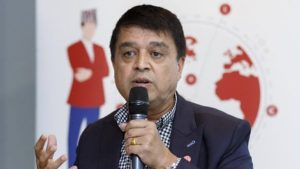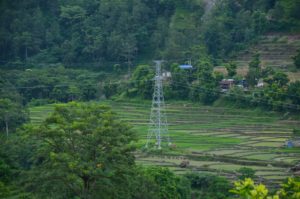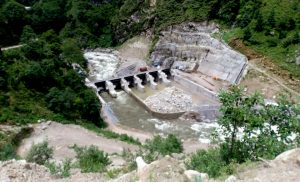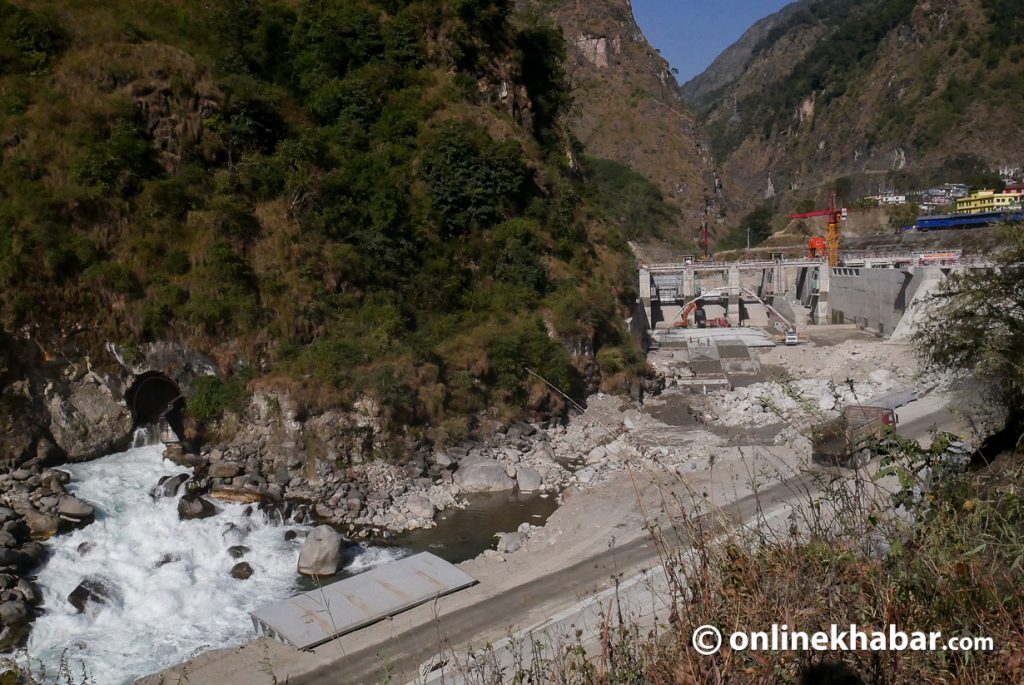
Looking at the site of the Sailung Hydropower Project some kilometres away from the Lukusingh village in Bhotekoshi rural municipality of the Sindhupalchok district in central Nepal gives Seti Maya BK anxiety. Her family has lived in Lukusingh for as long as she remembers, but things are not looking good for her as the hydropower project plans to build a water tunnel under the village.
Lukusingh has been prone to landslides, and they have become worse after the 2015 earthquake. The locals claim the village is sinking as its soil is weak. Now, with plans for the hydropower project laying pipe underneath the village, the people live in fear that they might have to relocate from their ancestral homes.
“They’ll be using dynamites. What will that do to the already loose soil? We will not let them do what they want in the name of development,” says BK.

This project, if completed, will be the third hydropower project in the Bhotekoshi river. Upper Bhotekoshi, a 45-megawatt project, has been in operation since 2001 while Middle Bhotekoshi, a 102-megawatt project, is nearing completion. With a third one getting permission to operate and 10 others in the pipeline, locals are starting to wonder how many more projects will be given permission to operate in one river system.
This question has plagued environmentalists and the locals living downstream too. While they understand the importance of hydropower projects on the economy of the country, they are in shock regarding why the government is not bothered about the impact of the projects on the river ecology and people’s livelihood as more projects are given the green light to operate in one river system.
Obvious crisis

Norbu Gyaljen Sherpa, a resident of the Panthali village which will also be impacted due to the construction of the Sailung Hydropower Project, says the project could be instrumental in developing the area, but he is concerned if it would result in the displacement of locals.
Locals like him argue that they have not received anything from the hydropower projects that have come and caused them a lot of harm.
The Upper Bhotekoshi hydropower project had talked about providing promoter shares to the local community but Sherpa says only a few local leaders got them leaving many like him disappointed.
“They don’t care about the locals. All they want is to fill their coffers and get rich. Who cares what poor people like us think,” he says.
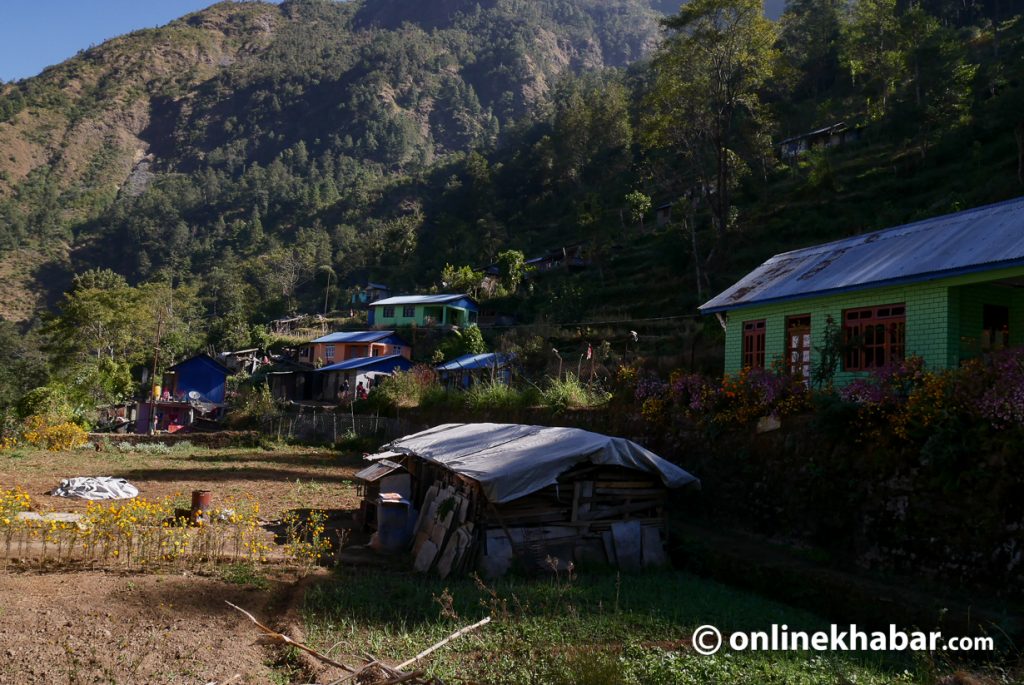
Devi Prasad Budathoki, an activist and resident of Lukusingh, urges authorities to understand how hydropower projects have an adverse impact on the village, which is already suffering from the impact of the 2015 earthquake.
“Roads are often obstructed and water sources are drying up and our settlements are at risk. We have been living in fear throughout the year, but it mostly intensifies during the monsoon,” he says.
He says that a team from the National Disaster Risk Reduction And Management Authority had come to the village and said that it had to be relocated as it was vulnerable to landslides. A report was prepared and submitted to the government, but the recommendation of the authority was not implemented.
“Now, they want to dig a tunnel under our village and not even care about what happens to us? We will not let that happen. We will fight for our rights,” he says. “We won’t let them ruin our homes and displace us without proper compensation.”
A case is pending at Patan High Court, and construction, for now, has stopped.
Defence

Onlinekhabar’s attempts to contact Sailung Hydropower Company for comments on the issue were unsuccessful.
Sindupalchock is the most vulnerable district when it comes to natural disasters. This was the reason why it has taken the Middle Bhotekoshi Hydropower Project nearly a decade to be completed.
The 102MW project was affected by multiple calamities like the Jure landslide in 2014, the earthquake in 2015, the flood in 2016 and several other small-scale disasters. While building the damn, the project relocated 32 households too.
“We compensated everyone and help them build a new house. Around 11 families favoured new houses while others opted for money. We also provided promoter shares to these families and IPO shares to the locals of this district too,” says Ram Krishna Adhikari of the project.
When asked if having multiple hydropower projects in the same river system will have a negative impact on the river, the companies say it does not.
“Hydropower projects don’t impact the water flow in the river as the water is diverted through the tunnel and gets back to the river,” says Ajay Kumar Singh, the plant manager at Upper Bhotekoshi. “We are using water and releasing it back into the river as per the agreement.”
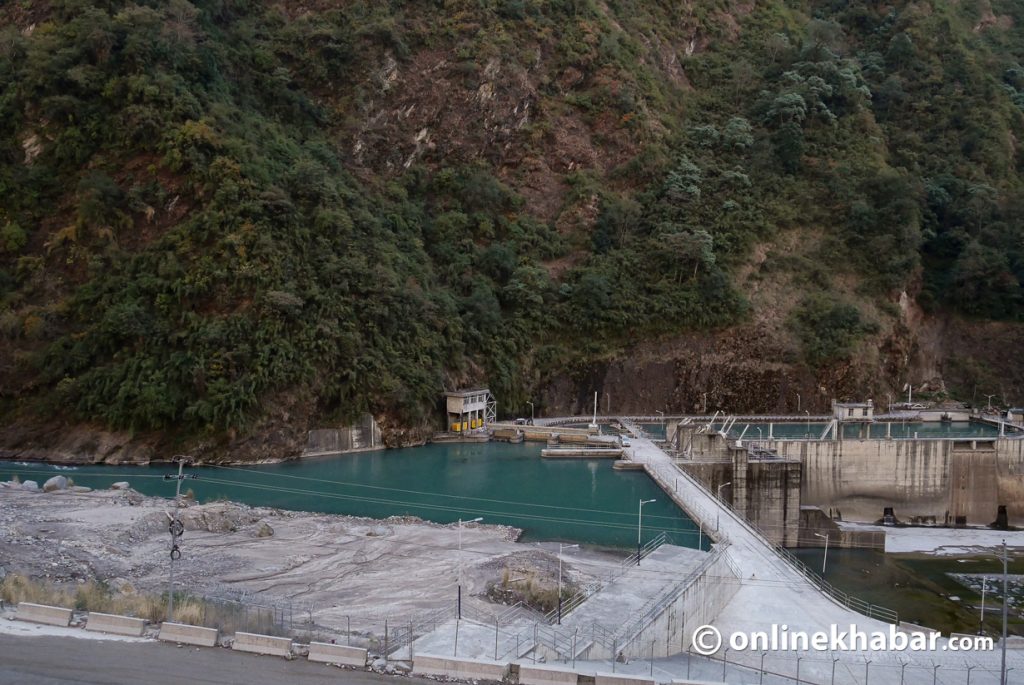
Singh even says the Upper Bhotekoshi dam saved villages downstream by blocking rocks brought by a glacial lake outburst from China.
“Since our dam and powerhouse are near the border, it hit us first and saved the villages downstream,” he says.
Nepal Electricity Authority‘s spokesperson Suresh Bahadur Bhattarai says the number of hydropower projects in one particular river system is not an issue as most of the projects are based on the run-of-the-river model and use the natural flow of the river to generate electricity, without the need for a large dam to store water. These projects are typically smaller in size and have less impact on the river ecosystem.
“Even that, for now, has stopped as the limit has been reached,” says Bhattarai, adding the authority alerts projects about not harming the river ecology and says the Department of Electricity Development monitors the project time and again.
Most of the hydropower projects have received permission to operate based on the environmental impact assessment (EIA) and detailed project report (DPR) submitted to the Department of Electricity Development.
Lost livelihood

But people downstream do not believe Singh or Bhattarai’s claims that the river is not affected by the hydropower projects.
Dinesh Rai has been rafting in the Bhotekoshi for over two decades. As a guide, he has seen how the river has changed. He says two things have caused this change: the excavation by the crusher industry and hydropower projects.
“They can say what they want, but the river has lost its natural flow. We hardly see rapids during the dry season, which has made it less interesting and attractive for adventure seekers from around the world,” says Rai, adding the water has become polluted too.
This in turn has impacted the businesses that rely on rafting. There are 13 resorts in Sukute on the bank of Sunkoshi–the river where Bhotekoshi merges into as a tributary–that are full of tourists during the weekends. The people who come there are Nepalis looking to indulge themselves in rafting on the Bhotekoshi. On top of that, hundreds of foreigners come to the area as Bhotekoshi is one of the top destinations for white water rafting in the world.

But now, businesses fear the increasing number of hydropower projects will kill the rafting business.
“There are limited rafting potential destinations, but enough rivers for hydropower projects. Why should the concentration of hydropower projects be in Bhotekoshi,” questions Narayan Shrestha, the general secretary of the Nepal Association of Rafting Agencies.
He believes the government should stop allowing permission to build hydropower projects and says the Bhotekoshi river should be declared a “heritage river” and saved for rafting purposes.
Shrestha even says the environmental impact assessment reports of a few hydropower projects they went through were mostly copied as many documents were fake.
“They have not even conducted proper environmental studies,” he says. “There is a policy-level intervention necessary to address the issue.”

The locals say that the aquatic life has disappeared too. Bishnu Majhi, 60, from Eklo Besi in Chautara Sangachokgadhi municipality, who dedicated his life to fishing, quit a few years ago. He said he had to as he did not have any other choice as there were no fish in the river.
“My sons have quit too. There’s not enough fish for everyone,” he says.
He says a few from the village continue to catch fish, but they only catch around 2 kgs when a decade ago they used to catch around 8 kgs.
Its impact can be seen in Dolalghat, a place famous for its local variety of fish. With aquatic life scarce in the Bhotekoshi, Indrawati and Sunkoshi, almost all eateries in the area buy fish from sellers who bring it from the Terai, the southern plain of Nepal.
Bijaya Majhi from Ramche still spends a few hours fishing, but he has to travel all the way to the Bhramayani river in Jalbire as fish around the Dolalghat area are scarce.
“I’ve been doing this for nearly a decade now. I used to catch 10 kgs on a good day, but now the most I catch is around 2-3 kgs,” he says.
He says this is due to the decreasing water level and the use of chemicals to clean dams for hydropower projects.
“That is what I’ve heard,” he says.

Adhikari from the Middle Bhotekoshi project agrees the fish number decreasing is due to hydropower projects, but the main reasons he says is flood and landslide. He says the project has even allocated a budget to release fish into the river.
But, locals like BK, Majhi, Shrestha, and Rai–who are dependent on the river–feel more needs to be done to save their livelihoods.
“We can’t let the hydropower projects destroy the river like this. It’s time the government did something and brought some policy-level changes,” says Shrestha, “If we don’t, the river will disappear into the tunnels and we will have nothing downstream.”






